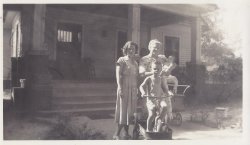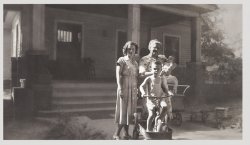There appears to be a thin layer of haziness & dust on this 1948 photo of my grandmother, aunt and cousins. I haven't had any luck in removing it. I've tried various tonal adjustments. camera raw filter haze removal, looked at individual channels, etc. but the haze remains. Searching for techniques / work flow to remove it and see the detail under it. Uploading the original jpg since the site doesn't allow tiff formats.



